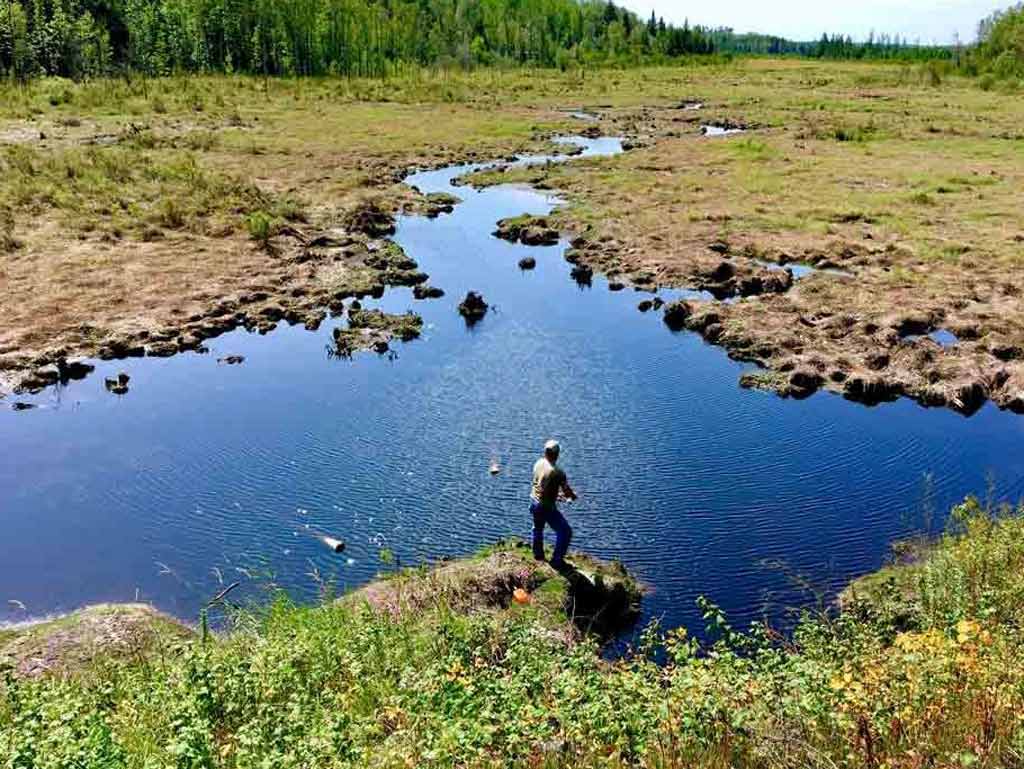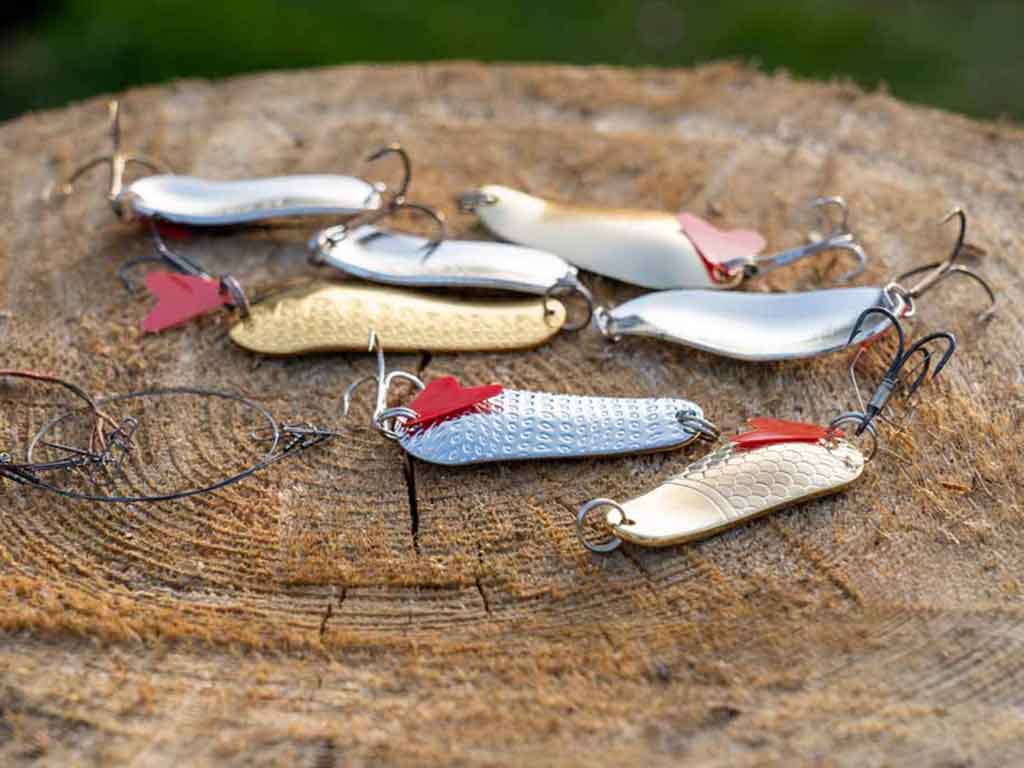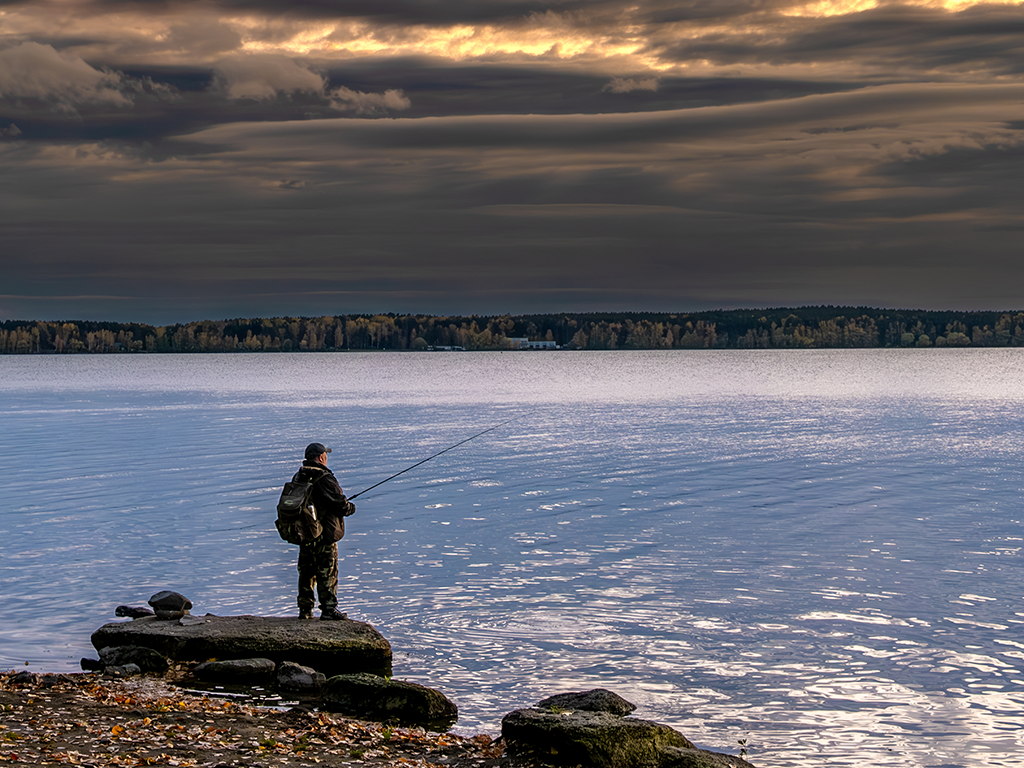Fishing from the bank is one of the most efficient and cost-effective ways to approach the sport of angling. While fishing from a watercraft is great, you can catch many of the same species in from shore with a good strategy and the right fishing spots. It doesn’t matter if you spin fish, baitcast, or fly fish, the bank is productive. And that goes for both freshwater and saltwater!

In this guide, I’ll show you exactly why and how. From my years of experience guiding across the country and fishing across the world, I’ll let you in on some tips to make your bank fishing trip productive. Ready to learn? Let’s dive in!
What is bank fishing?
Bank fishing basically means all fishing that happens from shore. You can include piers and docks if you want, as your feet are still firmly planted on the ground! However, bank fishing is different from wade fishing, where you enter the water to cast your line. Of course, it’s also different from anything involving watercraft.
Most entry-level anglers will begin by bank fishing and many experienced anglers prefer to fish in this way, too. Using the bank helps to maintain a low profile, and while you can’t reach out as far without wading or watercraft, you can catch just as many fish by reading the water and using the following proven tactics…
How to Go Bank Fishing
While bank fishing seems simple, it’s actually more nuanced than you might expect. Finding the right spots and choosing the best gear and techniques are critical factors. Reading the water is no easy task, and it’s vital for finding fish along the bank.
Bank Fishing Equipment

You can bank fish with any form of rod and reel. You can even handline or fish with your bare hands if desired. For the most part, though, you’ll need a spin, baitcasting, or fly fishing setup. Basic line clippers, weights, swivels, and standard equipment apply – with trolling gear being the exception. Most bank fishing gear is the same as what you’d use on a boat, but surf fishing and super heavy-duty applications may call for specialized rods.
Rigging for Bank Fishing
Again, rigging isn’t much different than any other form of fishing. The water depth and current speeds will dictate how you rig. For example, casting bait rigs into heavy currents calls for more weight to get down quickly. Fishing slow currents or lakes means you have more flexibility in weight and rigging to reach depth at your own pace.
For the most part, bank fishing is done with a cast-and-retrieve approach or a sit-and-wait approach. You can cover miles while walking the bank, or rig a bobber and sit in a camp chair until something bites. My favorite approach is to cast and move because I can cover ground and learn where fish hold in the lake or river. If you know a single spot is productive, however, sitting and waiting is great.
Selecting Baits and Lures

Your lures and baits will vary based on the species and environment. That being said, the following general options can work just about anywhere:
- Spoons and spinners. You can’t go wrong with a simple spinner or metal spoon. These lures catch everything from Trout to Pike, and they’re easy to find and use.
- Jigs. You’ll never go wrong with a jig. A bucktail jig or jig with a soft plastic imitation is likely the most versatile thing you can fish. They work well vertically or on the cast and retrieve.
- Worms and eggs. Night crawlers, mealworms, red wigglers, and salmon eggs are all great on a bait hook! Of course, you can catch grasshoppers and other local insects as well.
- Crankbaits and stickbaits. For more aggressive fish like Bass and Pike, try a deep diving crankbait or one that rides closer to the surface. They work in saltwater from the shore as well.
What can I catch when bank fishing?

You can catch just about anything in fresh and saltwater from the bank. Musky, Pike, Bass, Trout, Catfish, and other freshwater species are all accessible. In saltwater, you can catch many species, but the odds of a Marlin, Sailfish, or other pelagic species are lower. That said, I’ve caught plenty of Jack Crevalle, Mahi Mahi, and other exciting species from shorelines with steep drop-offs.
Where to Go Bank Fishing
So what actually makes for a good bank fishing spot? Well, that depends on the fish species you’re after. A general guideline is to find the right habitat. It’s a good idea to drive shorelines when possible and to walk them where the road ends. When you find a great spot, keep it to yourself and take advantage of the great fishing.
Rivers

Look for eddies where insects and food circulate in the current. Eddies are often deep with slow-moving spots that hold big fish. They’re great for a variety of species, too. Also, look for deep tailouts at the bottom of a run or gradient change. Undercut banks are a favorite as they create an ambush position for bigger fish. Lastly, you can score big by focusing efforts below dams and prominent structures like bridges.
Lakes

Stillwater environments are much different from rivers. Deeper areas are typically a good way off the shoreline. Look for cliffs, rip-rap banks, and any areas with water that drops off quickly for success. Structure is also a critical component in lakes, so you’ll want to look for trees, rocks, and bankside habitat that allows fish to live comfortably along the shoreline.
It’s a common habit to look farther first, but I’ve learned that it’s best to work close to shore first and gradually reach out farther. Many fish sit near shorelines where terrestrial insects, mice, frogs, and other food are more accessible.
Saltwater

Surf fishing from shore is popular with heavy-duty rods and heavy weights. You’ll cast out far, allow the baited rig to sink, and wait for the pull of a fish. This is a great way to bank fish in the ocean. Your best bet is to fish the jetties or walk out on piers. Personally, I love walking beaches and rocky shorelines while casting and retrieving lures. Topwater teasers are especially fun if the bite is hot.
Bank Fishing FAQs
Are you ready to hit the bank?

With some effort and basic fishing equipment, you can catch some big fish from the bank! There’s no need for boats or wading equipment, but you will need to read the water and spend some time finding productive spots. Bank fishing is a ton of fun and one of my favorite ways to fish. Grab a rod – along with your favorite lure – and hit the water!
Are you a bank fishing expert? We’d love to hear your tips and tricks for success on the water. Chime away in the comments below!
